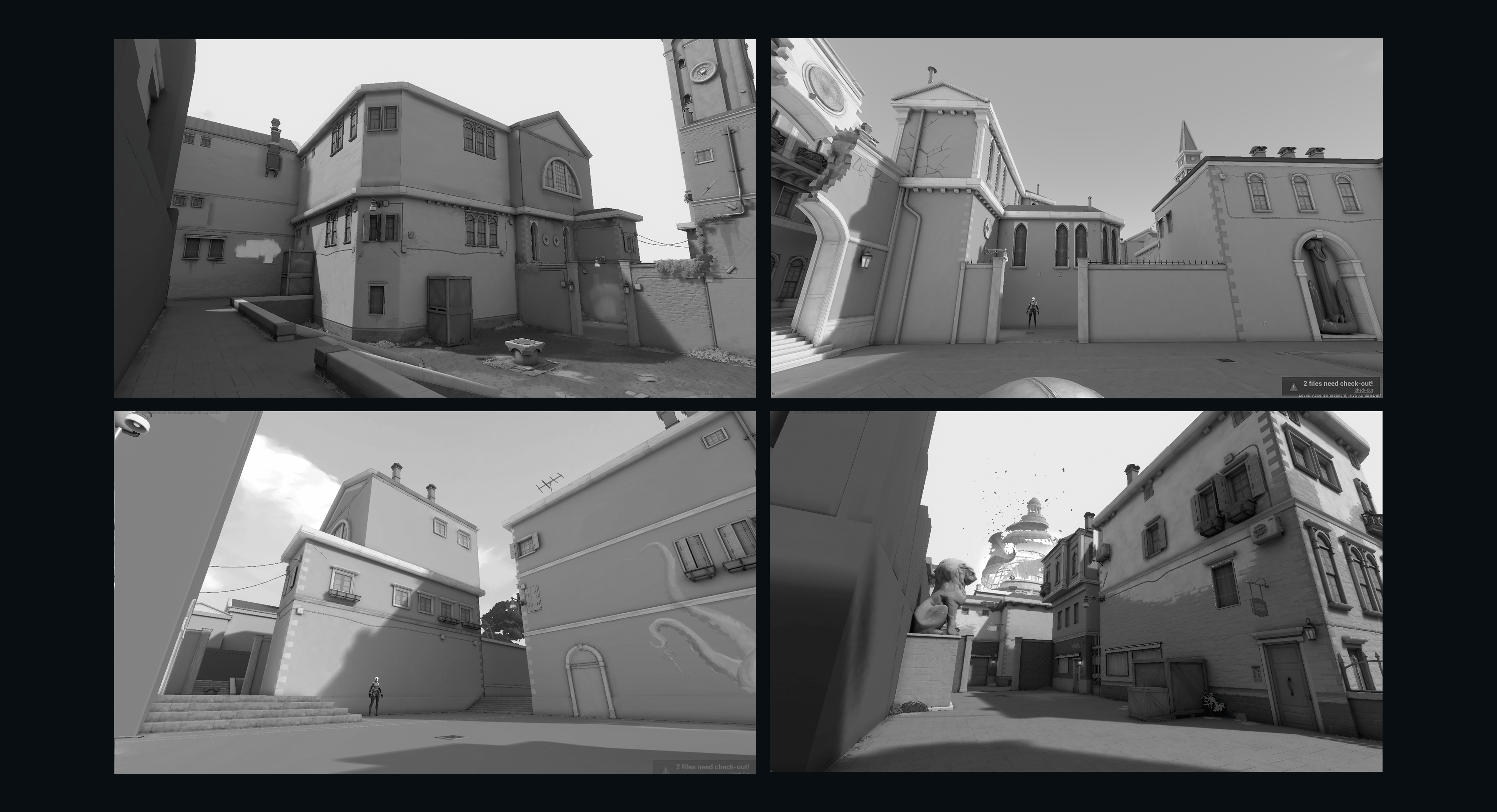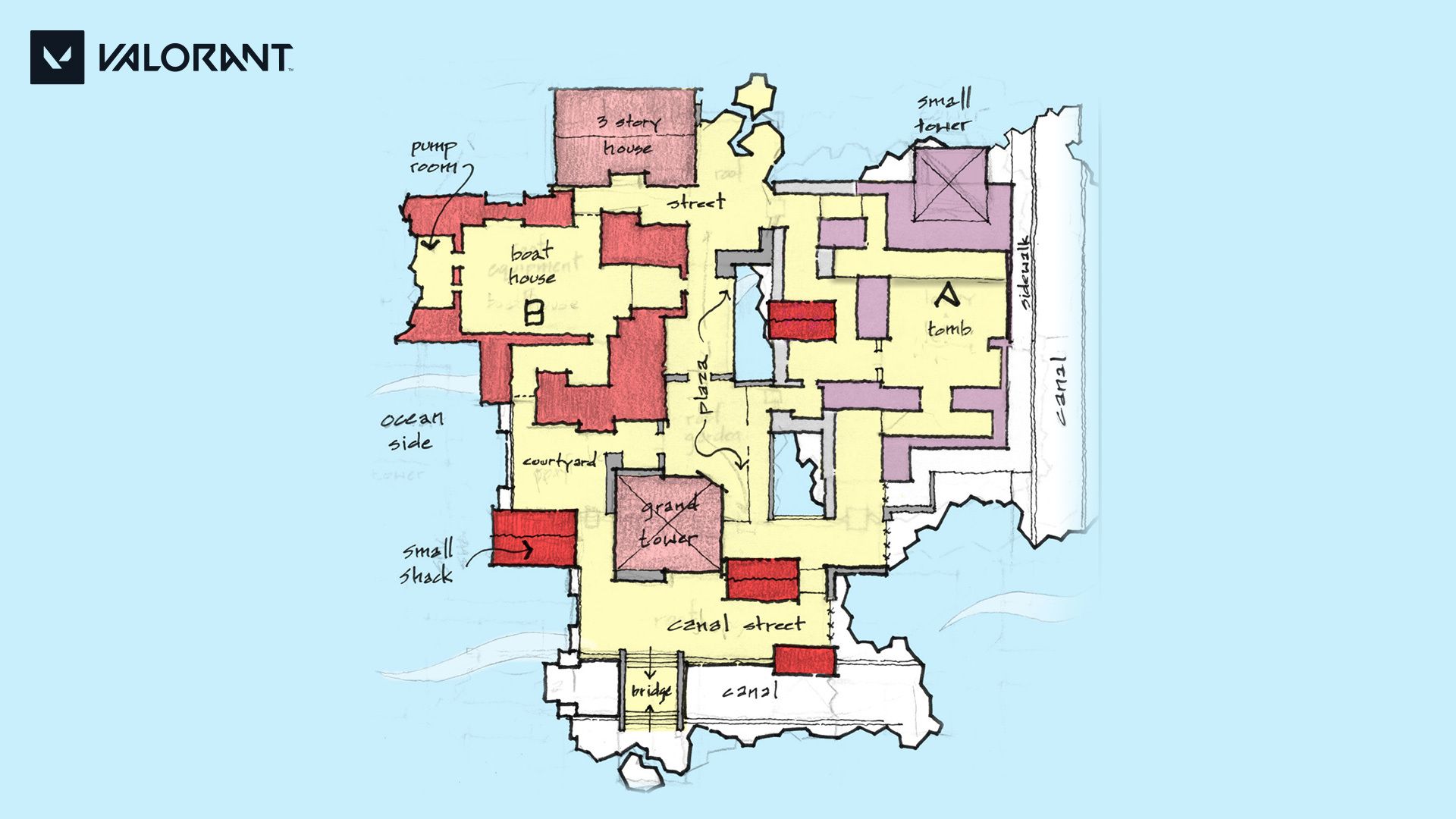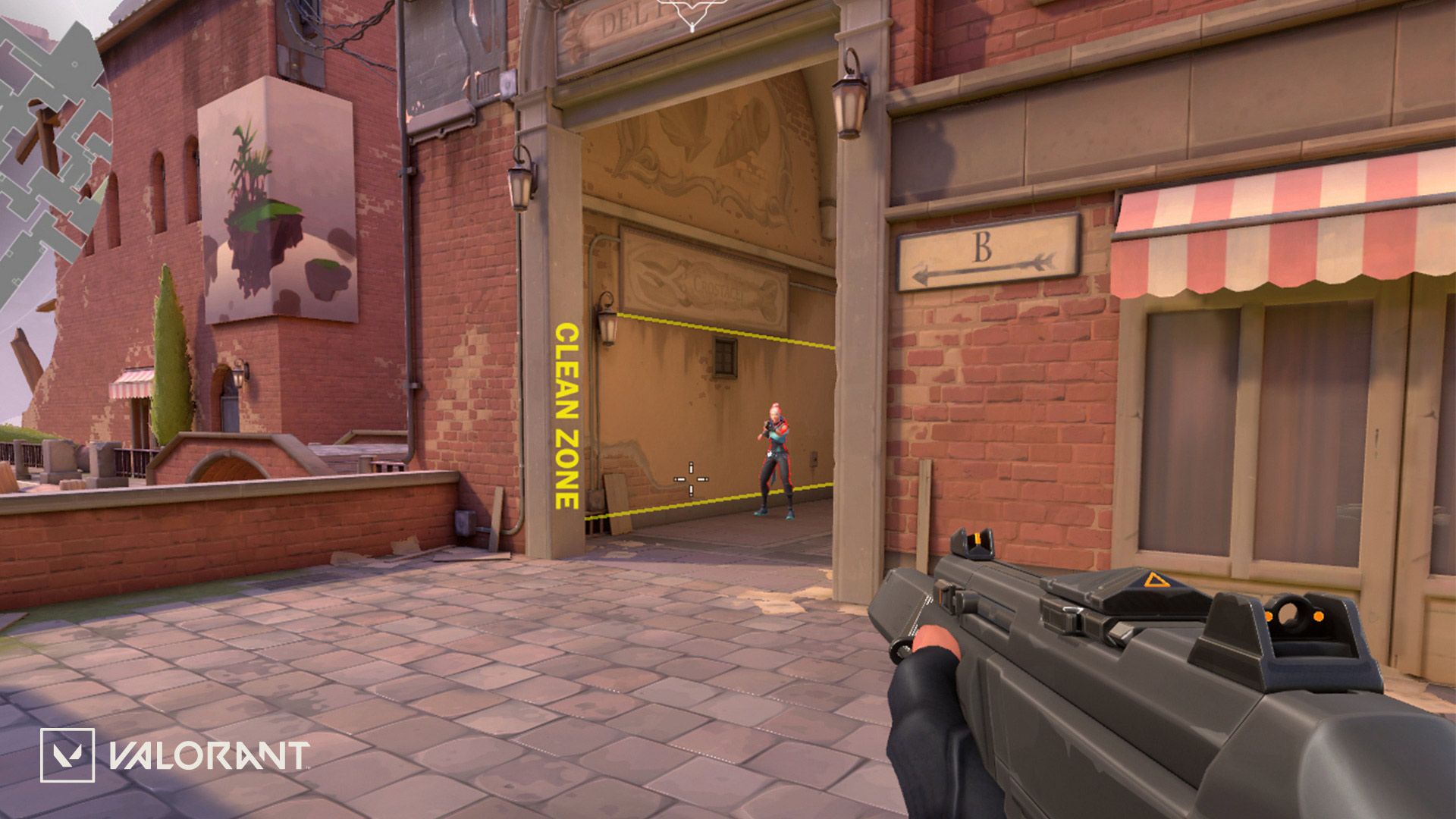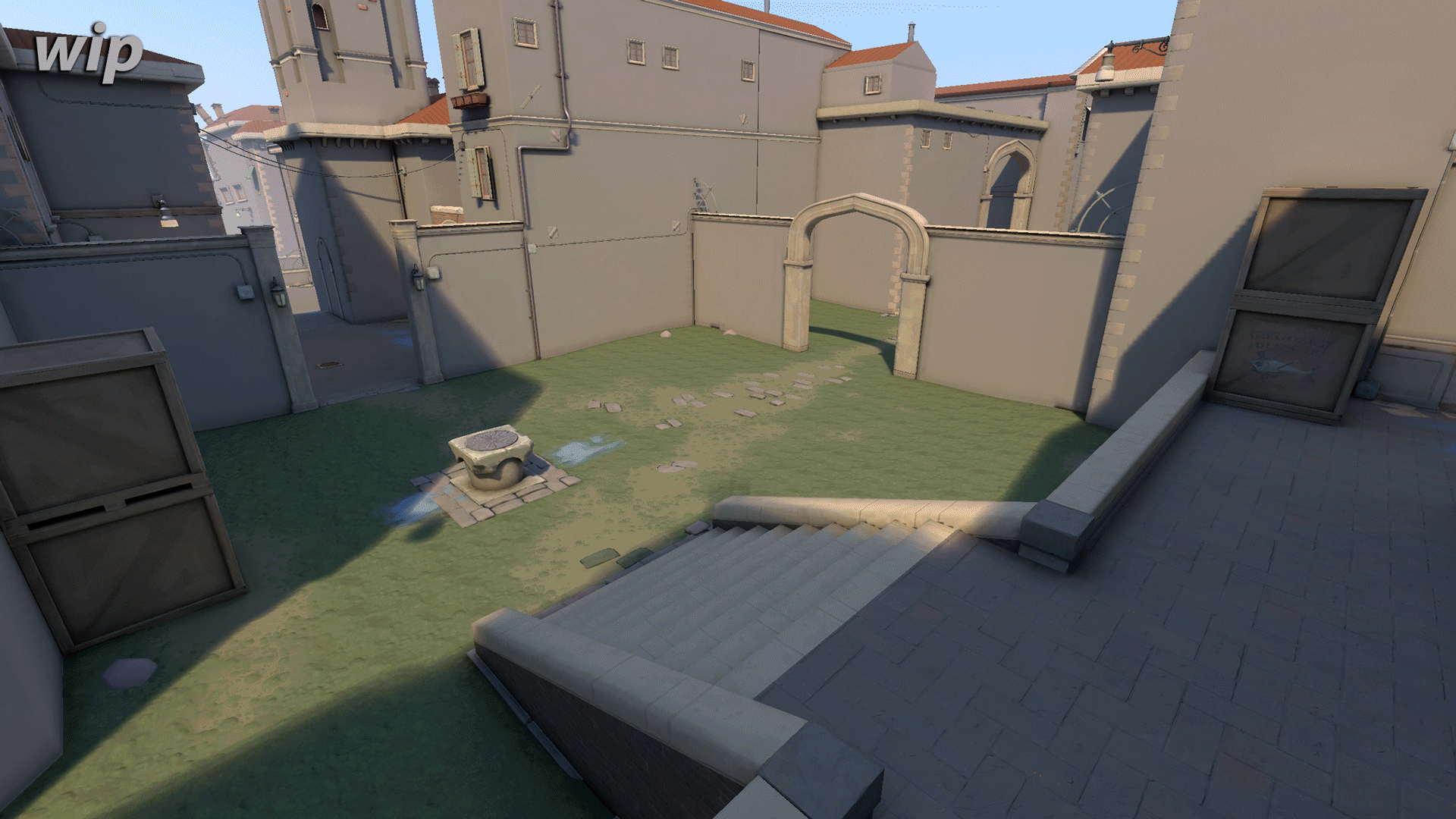The Birth of Ascent
As a follow up to our discussion several weeks ago about the Creation of Split, we wanted to provide clarity on our overall map creation process with a focus on our latest map, Ascent. As you might imagine, it takes quite a while for a map to evolve from initial idea to landing in your laps. Ascent was one of the very first maps that we put together on VALORANT and was the place where we developed and refined much of the core gameplay that you experience today.
It’s been on a long road...
The whole map process kicks off with a stage called Incubation. This is where the designer builds a proposal that establishes a design goal, clear constraints to work within and a unique visual experience for players. These proposals usually include top-down plans of the map and often contain simple 3D models that can be experienced in our engine.
Since Ascent was the foundational experience for VALORANT, the goal of this map was to create a traditional three-lane tactical experience that also allowed players to alter connections through the use of a mechanical door. It was designed to be a baseline experience for future maps to grow from.

Once we have an idea that the team is excited about, we move into the Greybox phase of development, which can take anywhere from several months to several years. During this phase we build a rough model of the environment in our engine, set up all the core gameplay elements, roughly prototype new elements (like those mechanical doors), and then play it extensively.
The key here is to fail fast, playing new iterations of the map several times a week. This is where we dial-in every sightline, encounter distance, opening width and all the other nuances that you see in our maps today. We only leave Greybox once everyone feels confident in the intended design direction and when the map is playing really well.
Ascent’s creation coincided with the iteration of VALORANT itself, including further design on the impact of abilities, the power at range of each weapon, and even our IP direction—so Ascent stayed in Greybox for close to three years.

This next phase of map development, Block-in, begins with concepts of the high-level vision for the visual experience. This two month process attempts to answer all lingering questions on the map. By the time this phase is complete, we want gameplay to be silky smooth and fully understand what every single structure and cover object looks like. Ideally, once a map leaves this phase all we are doing is executing on art.

During the early stages of Block-in we are also looking at the overall composition of the map and how it helps inform player orientation and navigation. Essentially we ask how can the art make the map play better? For example, how can we use architectural hierarchies in the map to reinforce the important parts of the game such as the objective sites and major routes of circulation?

With Ascent, we started with the idea that a chunk of medieval Italy had been ripped out of the ground and thrown into the sky. We then needed to assess how this visual direction would integrate with the Greybox layout that was playing so well.
This is where ideas such as the central tower came into existence and where we started accentuating Site A, the high point of the map, with the domed basilica and Site B, the low point of the map, with the drained canal and boathouse.

While the artists and designers tag team the Block-in process, Art Production responsibility falls squarely on the shoulders of the amazing artists of the Map team. Here we use the concepts finalized in Block-in to build an environment experience that is memorable for players and that also makes the map play better.
One rule that we try to adhere to is the idea of a clean gameplay zone across the map. This specifically means that we keep the majority of artistic detail of the map below about 1 foot in elevation or higher than 9 feet. The area in between, which we call the Clean Zone, then becomes a simplified space with high visibility. We want our agent silhouettes and especially the head to read very clearly as players putting rounds on target is key to winning the game.

Beyond this area, the artists can really use their talents to craft spaces that feel special. Art Production can last upwards of 6 months and also involves tasks such as adding ambient audio to help make each part of the map feel alive.
On Ascent, and all of our other maps, we spent a good deal of time identifying key points of interest (POIs) through statues and murals that again helped players orient themselves.
You can see this with callouts such as Courtyard, Garden and Market.

Although this process can take up to a year to complete, Ascent took close to five years as it continued to evolve along with the game itself. It has been a long journey but in many ways we are just getting started. In patch 1.02, we reduced some of the angle complexity on the map and we will continue to improve things with the help of all of you.
As always, thanks for the continued feedback and we will see you out there on the floating isle!